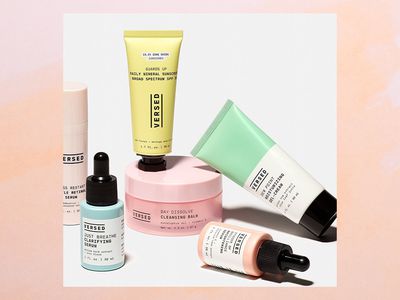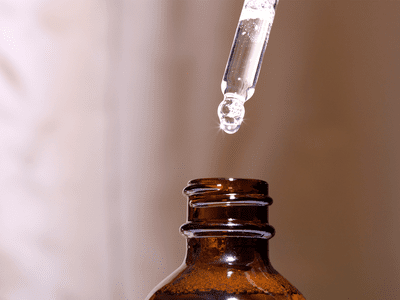
Ringworm Candida Cancer Treatments Acne Inversa Erythrasma
It’s certainly not the sexiest topic, but armpit rash and armpit irritation are very real things—very real, very irksome, and very uncomfortable things, at that. There are several potential causes (which we’ll get to in a minute), but certain biological qualities don’t help matters. “The skin in this area is thinner compared to most parts of the body, making it more sensitive and susceptible to environmental irritants,” explains board-certified dermatologist Teresa Song, MD. It’s also a skinfold—where the skin is on top of and rubbing against other skin—and an area with chronic moisture and chafing, creating a perfect environment for bacteria and fungus to grow, she adds.
All these factors make this spot more prone to irritation (or intertrigo, a rash or inflammation in a skin fold). But several different conditions could be causing your armpit rash. We asked Song and board-certified dermatologist Hayley Goldbach, MD, to break down the most common causes of armpit rash. Read on for what they told us.
Dermatitis
“Dermatitis simply means irritation or inflammation of the skin,” says Goldbach. It’s an umbrella term for several types, including atopic, seborrheic, and allergic contact.
Of these, the first two are relatively rare in the armpit, notes Goldbach. Atopic dermatitis (AKA eczema) doesn’t frequently occur in the armpit because it’s a naturally moist environment—atopic dermatitis is associated with dry skin, she explains. Seborrheic dermatitis usually occurs in areas with a high concentration of oil glands and not in the armpit, adds Song.
What's most likely is allergic contact dermatitis, which is essentially a fancy way of saying that you have a true allergy to an ingredient coming into contact with the skin. It manifests as a red, flaky, or bumpy rash with itching and is usually treated with prescription-strength anti-inflammatory creams, Song notes. Still, she adds that an irritant contact dermatitis is more common than a true allergy. To that point…
Deodorant Rash
According to Song, a deodorant rash is more likely to be an irritant contact dermatitis than a true allergy. In other words, something in the deo you're using is irritating your skin, but you're not actually allergic to it. "The ingredients in the deodorant may be too irritating to the sensitive skin in this area, and, coupled with the occlusion from the skin folds, can increase penetration and cause a red, bumpy, itchy rash," she explains.
Discontinuing the use of the deo is step one, followed by using topical anti-inflammatory creams. Once the rash has resolved, switching to a fragrance-free, hypoallergenic deodorant is a good idea, says Goldbach.
Heat Rash
"Heat rash is a result of irritation from sweat and heat in the area, resulting in clogged follicles and sweat glands," says Song. So, it makes sense that it's more likely to pop up during the summer or when you're spending time in hot, humid environments.
It will often manifest as tiny red and clear bumps; your best bet for treatment and prevention is to air out the area as much as possible and keep it dry. (Song adds that using powder can help.) Changing out of sweaty workout clothes ASAP is also a good idea.
Folliculitis
Folliculitis is an inflammation of the hair follicle due to bacterial overgrowth, explains Song, who adds that it looks like red bumps and white pustules. Goldbach points out that these can also be painful and that the condition typically requires antibiotics (either oral and/or topical, depending on the severity), so a trip to the dermatologist is definitely warranted.
Inverse Psoriasis
Psoriasis is an immune-mediated inflammatory skin condition; inverse psoriasis is simply a form that typically occurs in skin folds, says Song. But it will also look a little different than standard psoriasis. "Because of the moist environment, it appears as well-demarcated red plaques without the superficial scaling seen in psoriasis elsewhere on the body," she explains.
Here's another instance where you'll definitely need to see a derm, as treatment options range from topical therapies to biological medications, Goldbach adds.
Ringworm
Ringworm is a type of fungal infection that can occur in the armpit due to trapped moisture, explains Goldbach. Song tells us it has a very specific presentation—namely, well-demarcated, ring-shaped plaques with red borders. Treatment typically includes the use of topical antifungals.
Candida
This is another type of fungal infection, but one caused specifically by candida yeasts. (AKA: It’s a yeast infection in your armpits.) It will look like red plaques with nearby small, satellite red lesions, says Song.
However, "sometimes it can just look like a bad rash that isn't responding to typical treatments, in which case you'll want to see a doctor," adds Goldbach. Again, topical antifungals are usually used, as are powders or pills, but keeping the area as clean and dry as possible is also helpful, she notes.
Cancer Treatments
"Cancer treatment can sometimes induce a rash called toxic erythema of chemotherapy," explains Song. It can affect the hands, feet, and skin folds (including the armpits) and shows up as red, tender plaques and blisters. Anti-inflammatory creams are the usual course of treatment, and potentially, in severe cases, oral steroids, she adds.
Acne Inversa
Also known as Hidradenitis supertiva, acne inversa is a chronic, inflammatory disorder that affects hair follicles. It can occur in all skin folds and presents with recurrent boils, scarring, and sinus tracts under the skin, Song says. Both derms we spoke with said that this is a very challenging condition to treat and absolutely requires the help of a dermatologist.
Erythrasma
According to Goldbach, erythrasma “is a form of bacterial infection that particularly likes the armpits.” It shows up as hyperpigmented or hypopigmented red patches with minimal scaling, as well as potential itching adds Song, who notes that it’s treated with topical antibacterial washes and creams.
Many conditions can cause an armpit rash, so if you’re dealing with discomfort in the area, it’s always a good idea to book an appointment with your dermatologist to help figure out exactly what’s causing it and the best treatment. That being said, keeping your armpits clean and dry and using a fragrance-free deodorant are good tips that can help across the board.
See More from Byrdie Shopping

11 Must-Try Makeup Tips For Almond-Shaped Eyes From Pro Artists

The Versed Skincare Products Team Byrdie Can't Live Without

How to Use Minoxidil—AKA Rogaine—for Hair Growth, According to Derms


